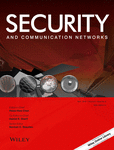Single authentication through in convergence space using collaborative smart cameras
Abstract
In recent years, the convergence of IT space and physical space is increasingly studied. In the legacy IT-based systems, developments of services were focusing on just the cyber space. However, as ubiquitous computing environment is expanding into the real world, considerations about how to design and develop the systems for ensuring the interoperability between two spaces must be taken. For indeed converging IT/physical spaces and ensuring the ubiquity, a new model to efficiently identify a moving object needs to be established. Although the identifier information resulted from successful authentication procedure is used in the most security systems, each authentication method adopts a variety of identifiable information (II) specification. So in this paper, we suggest a scheme to access any ubiquitous service with single authentication at initial stage for efficiently identifying an object moving multiple convergence spaces by relaying the II along the movement. This is performed by enabling distributed smart cameras to deliver II of the identified moving object. Copyright © 2014 John Wiley & Sons, Ltd.




